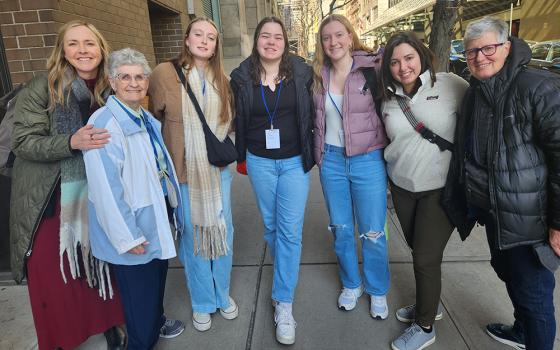
Not least among the challenges millions of Haitians face in the weeks, months and years ahead are the potentially crippling mental health issues that will emerge following what one U.S. general termed “a disaster of epic proportions.”
Among the consequences of the carnage: grief, anger, bereavement, loss, stress, depression and post-traumatic stress disorder.
With so much immediate need, what can be done about the inevitable mental health challenges, a byproduct of this deadly event?
“Lessons can be learned from Katrina,” said Dr. Elmore Rigamer, a former U.S. State Department psychiatrist, returned Peace Corps volunteer, and, currently, medical director for behavioral health programs at New Orleans’ Catholic Charities. “The immediate response is to provide for the basic needs of the people -- water, food, shelter and safety,” he said.
The role of first responders, governments and nongovernmental organizations is critical. “It is important for agencies responding to the earthquake to avoid creating a second trauma,” said Rigamer. “Such responders need to be agile, respectful and responsive to the individual person, enabling the person to help himself.”
An important part of disaster response is leadership, Rigamer said.
“It needs to be clear, effective and honest,” he said. It is critical to listen to the people, to not make assumptions about them and to take cultural sensitivities into account, he said. Rigamer suggested that mental health professionals use church leaders and community leaders as entry points.
That was part of the strategy in New Orleans following Hurricane Katrina in 2005.
“Immediately after Katrina, Catholic Charities staff went door-to-door doing an initial mental health assessment,” explained Tom Costanza, director of Catholic Charities’ Office of Peace and Justice and chairman of the long-term recovery committee. Staff was trained to spot trauma and symptoms such as alcohol and drug abuse, family conflict, domestic abuse and withdrawal, he said.
In late August 2009, almost four years to the day that Katrina hit, the newly installed archbishop of New Orleans, Gregory Aymond, observed the effects of Katrina. “What struck me was that people were still talking about Katrina as if it happened yesterday and they spoke with such a depth of emotion,” he said in a phone interview with NCR. “While I’m not a doctor, I could see signs of post-traumatic stress, such as fear and tension.”
“We simply cannot ignore the brokenness in people,” he said.
“The devastation in Haiti throws up in the air social connections and it’s not easy to regroup again,” said Dr. Ken Thompson, a psychiatrist with the Substance Abuse and Mental Health Services Administration, part of the U.S. Health and Human Services Department. “It is very important to undertake actions that connect people as human beings, especially for children.”
When a natural disaster strikes, there is what writer Rebecca Solnit calls in her seminal book, A Paradise Built in Hell: The Extraordinary Communities That Arise in Disaster, a “utopia of disaster.” Aid from around the world piles in and complete strangers help one another. A new order, a utopia, appears for a time. This seems to be true in Haiti.
But what happens longer term, after the “honeymoon of disaster”?
“As the people of Haiti and others begin to rebuild Port-au-Prince, it’s critical that trained personnel and money are provided for people to rebuild their lives,” said Aymond.
[Tom Gallagher writes for NCR’s regular Mission Management column. His e-mail address is tom@tomgallageheronline.com.]



